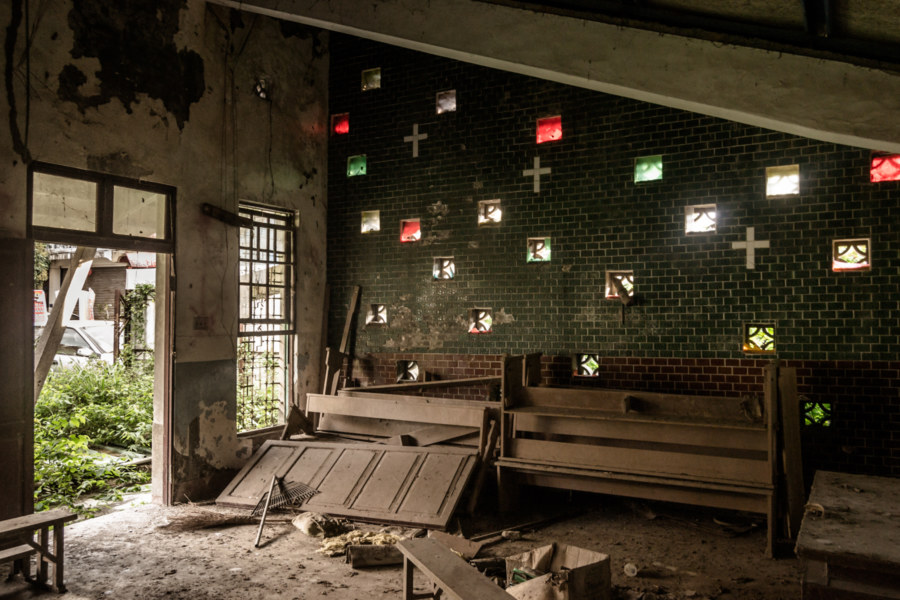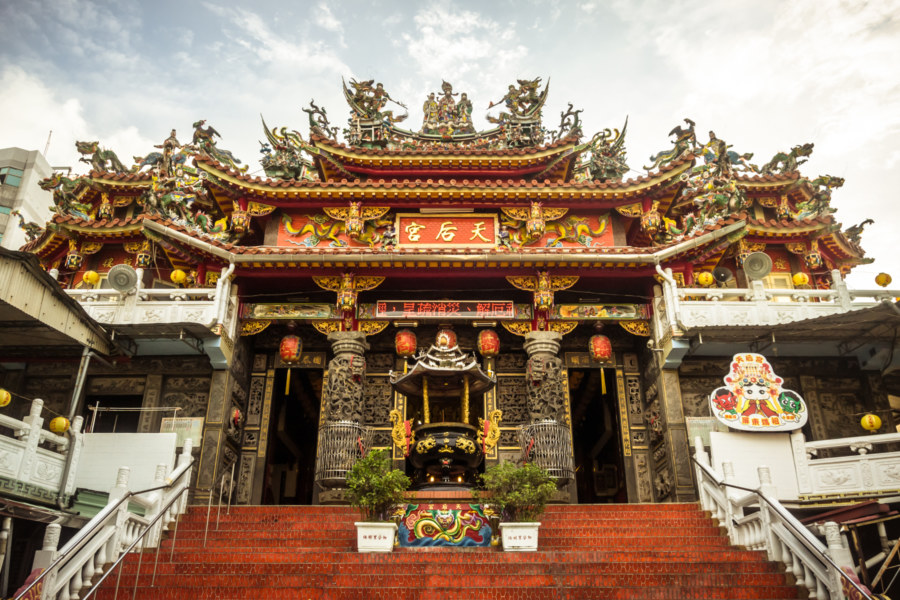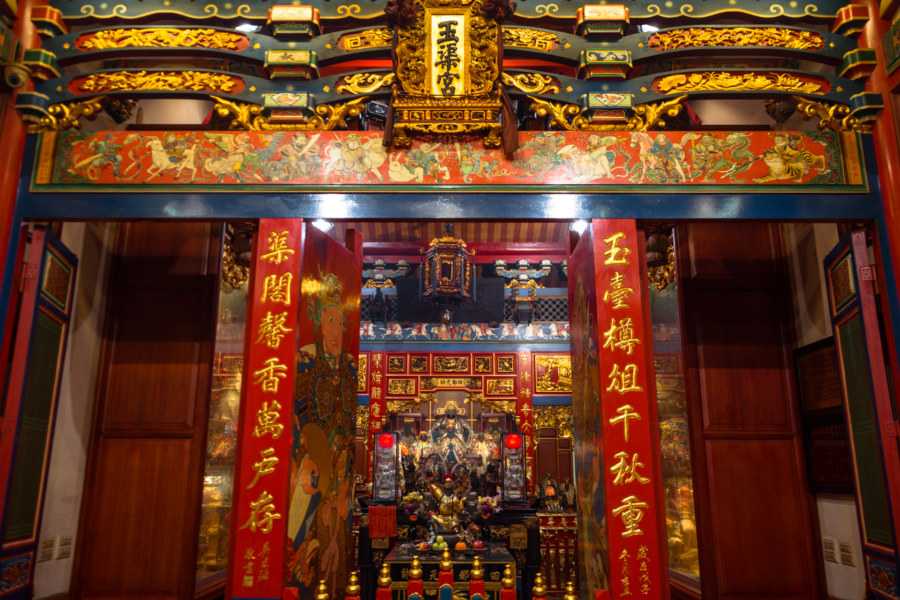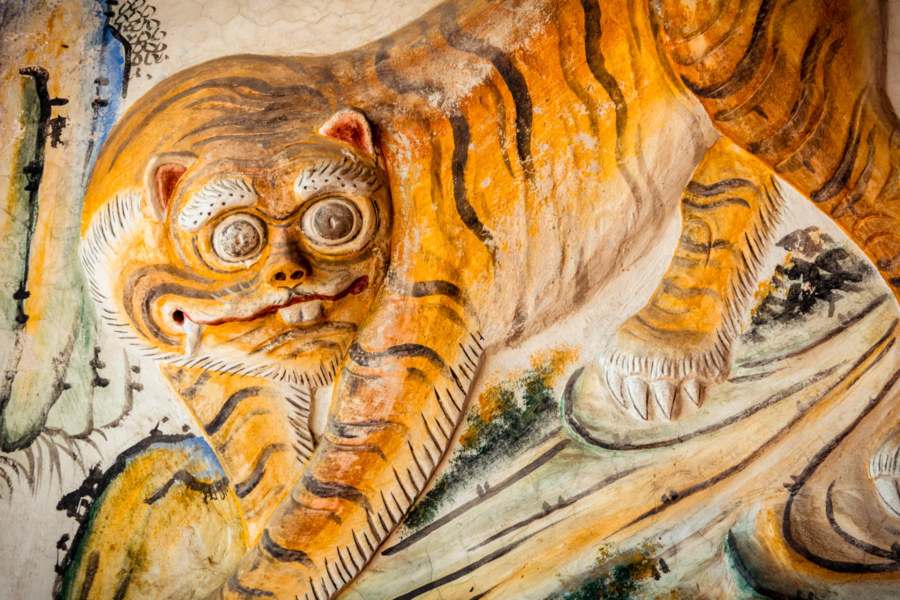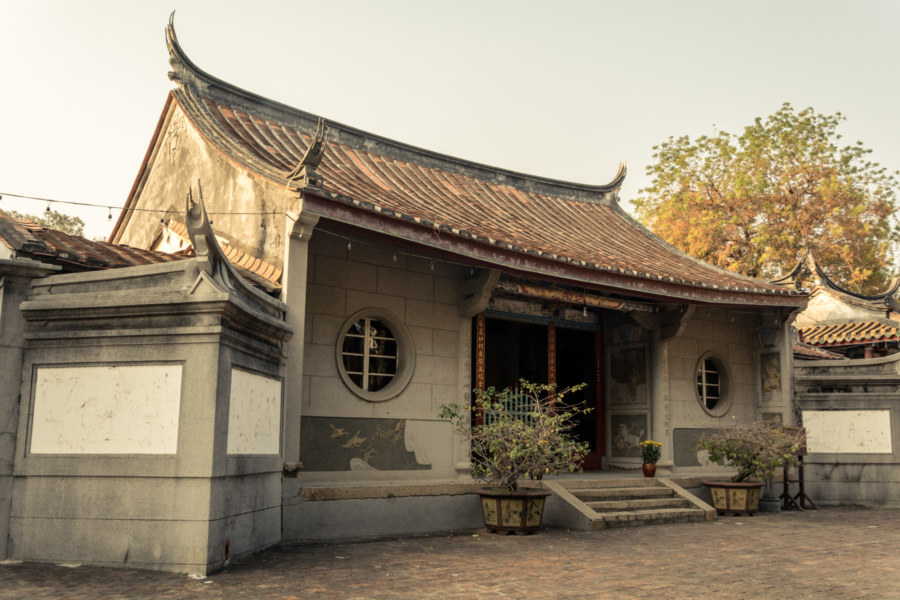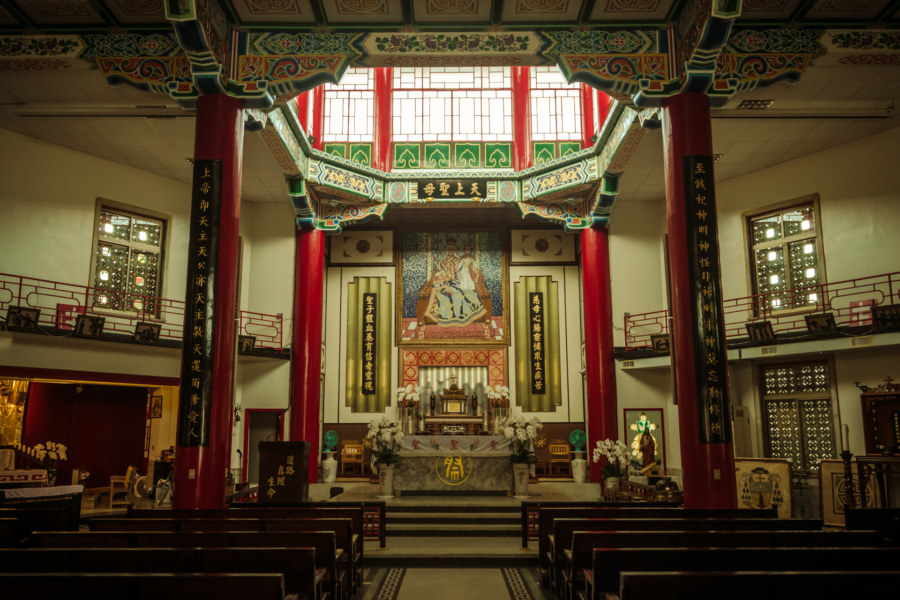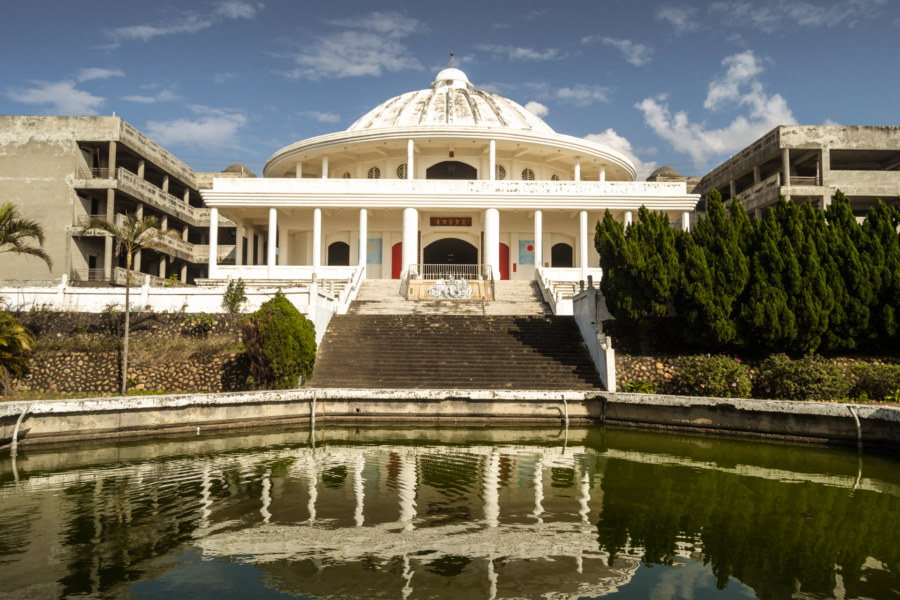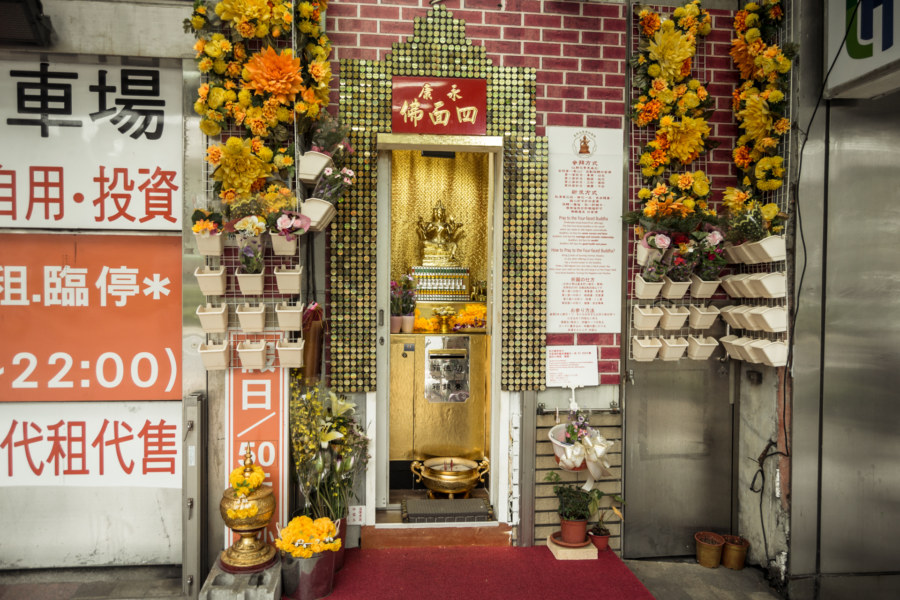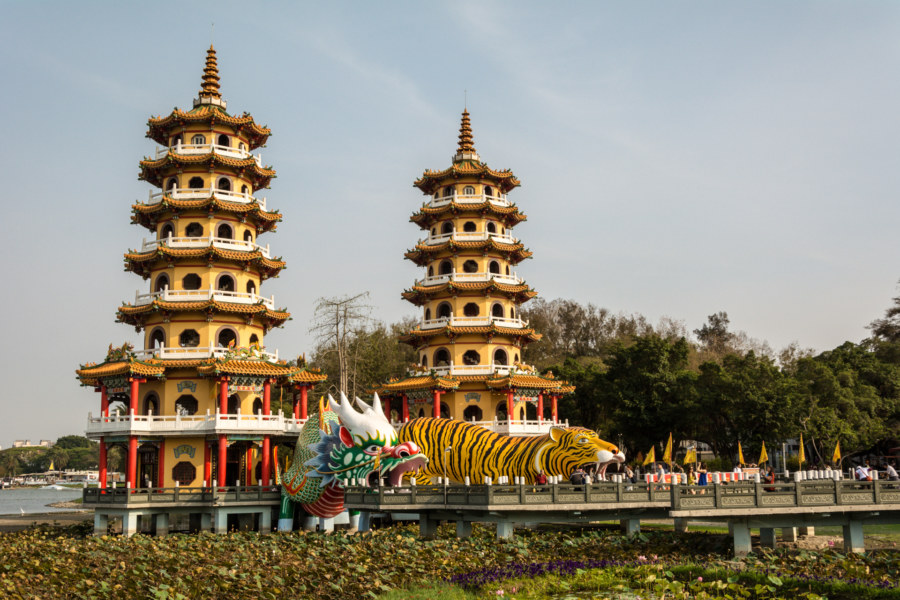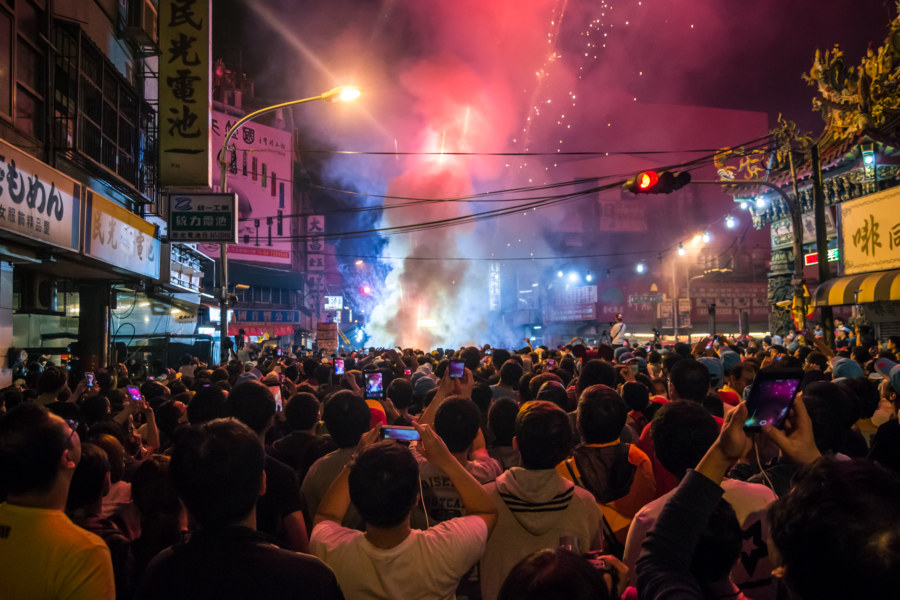While I was out riding in southern Taiwan last year I chanced upon an abandoned church by the roadside in a small village outside of Chaozhou, Pingtung. I only spent about ten minutes there and didn’t shoot many photos but have since realized that the story to tell is interesting enough to devote a full post to it. The formal name of this place is Jiǔkuàicuò Catholic Church 九塊厝天主堂, though this is commonly prefixed with Chaozhou to distinguish it from the many other villages with the same name in Taiwan. Details are scant but I should be able to provide a broad overview of how this church came to be here—and why it was left to the elements.
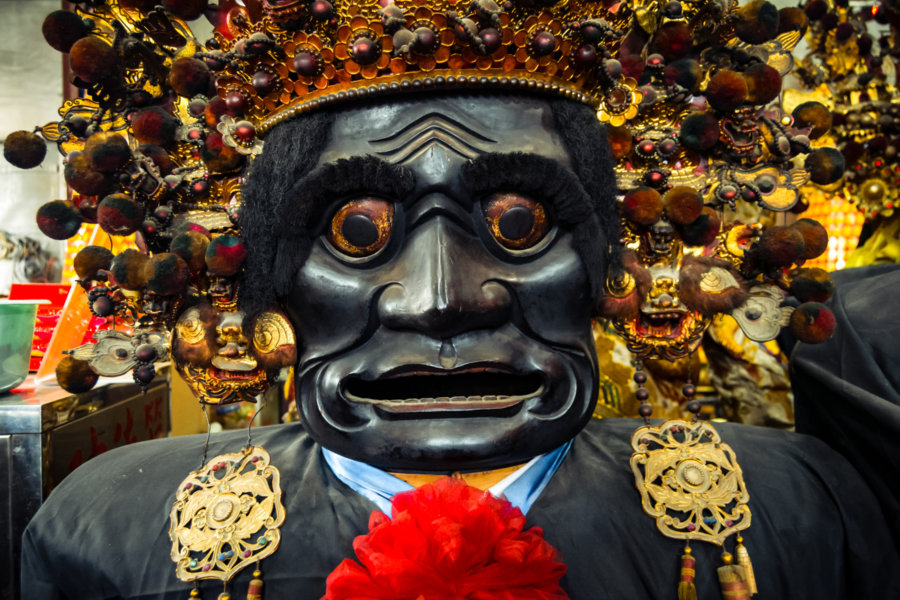
Postcards From Pingtung City 屏東市明信片
One of the pleasures of bicycle touring in Taiwan is the freedom to change plans on impulse. On my second day of a trip down south in June 2015, having previously cycled across Kaohsiung from Tainan, I opted to hang out and see more of Pingtung City. A dire weather forecast calling for bouts of torrential rain had already introduced some uncertainty, but I was also curious about this city of 200,000, about which almost nothing is written in English. Finding an interesting place to stay sealed the deal—and so I checked out of a grimy hotel near the train station after breakfast, moved my stuff to the new place, and spent the day exploring the administrative center of Pingtung, the southernmost division of Taiwan.
Lukang Yuqu Temple 鹿港玉渠宮
Yùqú Temple (玉渠宮) is a colourful temple in the back alleys of Lukang, one of the oldest and most traditional cities in Taiwan. Tracing its origins back to a simple shrine built in 1765, this small temple venerates Marshal Tian Du (田都元帥), the god of drama—and by extension traditional opera, theater, music, and other forms of performance art. Local gentry funded the construction of the first temple on this particular site in the twilight of Lukang’s commercial importance in 1902, during the Japanese colonial era. The temple underwent major renovations in 1967 and, in typical Taiwanese style, has been regularly improved and updated over the years.
Daodong Academy 道東書院
Dàodōng Academy (道東書院) is one of many Qing dynasty era academies scattered across central and southern Taiwan. Located in Hemei in Changhua, it was built in 1857, the 7th year of the Xianfeng Emperor (清咸豐七年), and operated as a private school devoted to classic Chinese literature, philosophy, and ethics, among other subjects. Commonly known to locals as Wénmiào (文廟, “Temple of Literature”), the academy also venerates Song dynasty scholar Zhū Xī (朱熹) and Kuí Xīng (奎星), the god of examinations.
Tainan Fahua Monastery 台南法華寺
Last year I briefly visited the historic Fahua Monastery 法華寺 in Tainan. Like many of my explorations of temples in Taiwan this one wasn’t planned in advance. I noticed the monastery from the roadside while riding through the back streets south of the train station and stopped to check it out on a whim. As it turns out, Fahua Monastery has quite a long and distinguished history—going all the way back to 1684—and the interior is unusually minimalistic and serene compared to most other temples I have visited here in Taiwan.
Our Lady Queen of China Cathedral 中華聖母主教座堂
Back when I was living in Tainan I made an effort to check out many of the temples I encounter in my daily travels around town. One day after breakfast, while riding along Kāishān Road (開山路), I stopped to check out what looked to be yet another temple across the street from the Koxinga Shrine (延平郡王祠). I was surprised to learn that despite the palatial Chinese architecture and seemingly traditional style of design this is a Catholic church, officially Our Lady Queen of China Cathedral (中華聖母主教座堂). Built in 1963, it is the top-ranking church in the Roman Catholic Diocese of Tainan (天主教台南教區). The name is derived from Our Lady of China (中華聖母), an apparition of Mary that took place during the Boxer Rebellion (義和團運動) in China in 1900.
Wansheng Zizhu Monastery 萬聖紫竹寺
Wànshèng Zǐzhú Monastery (萬聖紫竹寺) is an unusually austere temple located on the seaward slope of the Dadu Plateau (大肚台地) in Shalu, Taichung. At first I assumed it was abandoned, for there was absolutely nobody around when I visited. The main hall is in an obvious state of disrepair and the two flanking buildings remain unfinished. After wandering into both altars I left with more questions than answers. Apart from the Putuoshan White Temple it isn’t at all like most other temples I’ve seen in Taiwan.
The Four-Faced Buddha of Yongkang Street 永康街四面佛
The Four-Faced Buddha of Yongkang Street 永康街四面佛 is one of the smallest shrines I have ever seen in Taiwan. It occupies a tiny alcove next to an underground parking garage on Xinyi Road 信義路 east of Dongmen Station 東門站 exit 5 and the original Din Tai Fung 鼎泰豊. This alcove might have been a parking attendants’ booth prior to automating the entire system, although this is not explicitly stated in the material I have reviewed. From what I gather this shrine is the work of a local papaya milk vendor by the name of Mr. Lin. Despite its diminutive size—half a square meter according to some reports—the cost of rent is in excess of 10,000 NT per month!
Zuoying Lotus Pond 左營蓮池潭
Lotus Pond 蓮池潭 is a manmade lake in Zuoying, Kaohsiung, widely known for its quirky assortment of pagodas, pavilions, and temples. Earlier this year I made a short stop at Lotus Pond on the way to the old walled city of Zuoying a little further south. I like exploring temples in Taiwan but was mildly concerned Lotus Pond would be a bit too touristy for my liking. Turns out I had nothing to worry about; my brief tour of the southwest side of the lake was memorable and fun.
Mazu Mania in Changhua City 媽祖繞境
My last night in Changhua City was surprisingly eventful thanks to a fortunate accident of timing. Earlier in the day I had noticed an unusual uptick in the amount of activity on the streets while cycling around. Banquet tents had been setup on major thoroughfares, police were standing at major intersections, scooters flying yellow banners were buzzing around like angry hornets, and the air was filled with a palpable sense of expectation and excitement. After an early supper next to a coffee shop I often work at I approached to one of the staff (who speaks passable English) and asked, “What’s going on?” Their answer, “It’s the…” Trailing off, hands aflutter, obviously searching for the right word—and then: “Mazu!”
